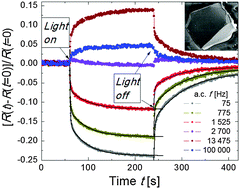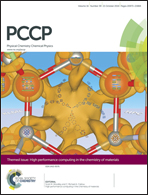Conducting behavior of chalcopyrite-type CuGaS2 crystals under visible light
Abstract
Millimeter size high quality crystals of CuGaS2 were grown by chemical vapor transport. The highly ordered chalcopyrite structure is confirmed by X-ray diffraction and Raman spectroscopy. According to energy dispersive X-ray spectroscopy the composition of the crystals is very close to the formula CuGaS2. Room temperature photoluminescence measurements indicate the presence of an emission peak at about 2.36 eV that can be related to a donor–acceptor pair transition. The electrical resistance as a function of temperature is very well described by the Mott variable range hopping mechanism. Room temperature complex impedance spectroscopy measurements were performed in the alternating current frequency range from 40 to 107 Hz in the dark and under normal light. According to the impedance spectroscopy data the experimental results can be well described by two circuits in series, corresponding to bulk and grain boundary contributions. An unusual positive photoresistance effect is observed in the frequency range between 3 and 30 kHz, which we suggest to be due to intrinsic defects present in the CuGaS2 crystal.


 Please wait while we load your content...
Please wait while we load your content...